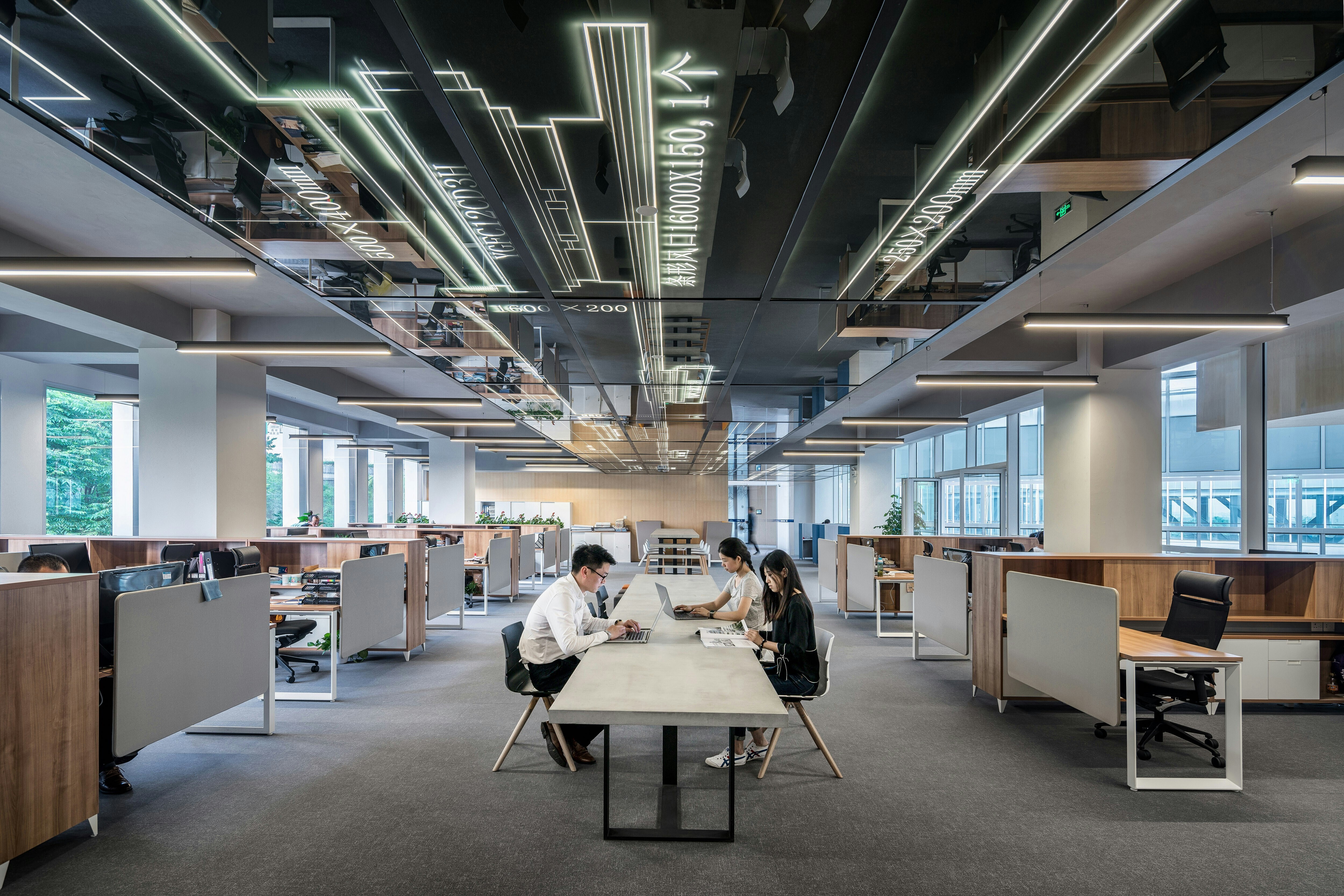Fixing the global skills gap: Here's why firms need to get migrant management right

The global labour market has vastly altered in recent years. Image: Unsplash/Clay Banks
Aida Hajro
Chair in International Business and Director, Centre for International Business at University of Leeds, Migration, Business and SocietyMilda Žilinskaitė
Senior Scientist, Vienna University of Economics and Business, Migration, Business, and SocietyListen to the article
- Staffing shortages are apparent across industries thanks to factors including an aging workforce, COVID-19 and immigration policies.
- Demand to fill open roles is driving a global race for labour and one way for companies to stay competitive is through employing migrant staff.
- As the global business landscape continues to evolve, companies will need to get migration management right to succeed in the race for talent.
The term “global war for talent” was coined by Steven Hankin at McKinsey & Company in 1997. In the intervening 25 years, an aging workforce, immigration policy, the COVID-19 pandemic, the ‘Great Resignation’ and shifting demographics have vastly altered the labour market across the world.
But the concept is more relevant than ever as today we are facing the global race for labour. Staffing shortages and demand for employees to fill open positions is apparent everywhere – from delivery drivers to teachers in schools and even company leadership. In the face of stiff competition for talent, one way that companies can remain competitive is to attract and retain migrant employees.
Contrary to politicized opinion, studies have shown that the world has not become more migratory. Nearly 97% of people on our planet stay in the countries where they were born.
In the last 60 years, the total number of international migrants has fluctuated only between 3.1% to 3.6% of the total global population, according to the International Organization for Migration's World Migration Report.
Although it should also be noted that as the world's population has increased, there has been a subsequent rise in the absolute number of people crossing borders.

As migration continues to be a stable phenomenon, it will not solve the global skills gap and manual labour shortage issues. Therefore, companies with internal capabilities for effectively attracting and managing migrant workforces can gain an upper hand in the global race for labour.
Migration management is not a straightforward task. To capitalize on the human resource (HR) potential of migrant workforces and be successful in the global race for talent, companies need to focus on these key areas by:
- Being aware of codependences between companies and governments when hiring migrants
- Developing in-house expertise to sustainably manage migrant employees
- Preparing for global labour market adjustments catalyzed by Industry 4.0
Global companies rely on a global workforce
In 2015, almost half of the 172 UN member states affirmed their intention to increase high-skilled immigration.
This was largely a result of corporations demonstrating that global businesses in a global marketplace rely on a global workforce to stay competitive. In the case of migrants, highly-skilled workers add to the organizational talent pool, increase diversity of thought and foster innovation.
But competing for high-skilled global talent is only one side of the coin. The last two decades have also seen increasing shortages of lower-skilled labour and this too is occurring at the global level.
Migrant workers from middle-income countries move to high-income countries, but then companies in those middle-income countries need to recruit migrants from poorer countries to fill their labour gaps.
For example, factories in Hungary, Poland, Malaysia and Thailand are likely already recruiting workers from Nepal, Mongolia, or the Philippines. Even China’s low-skilled labour reserves are gradually draining and factories are bringing workers from as far as African countries.
Labour demand and regulations often contradictory
HR departments wrestle with attracting enough migrant applicants, selecting among them and retaining those hired.
Interests of companies and states often contradict each other: national immigration regulations can pose a heavy bureaucratic burden for firms hiring foreign-born employees and workers.
For example, in many European immigration systems, work visas for non-EU citizens involve a painstaking process of case-by-case assessment of migrant candidates against the local labour market supply.
What's the World Economic Forum doing about diversity, equity and inclusion?
In the US, immigration laws are so complex that they often require the engagement of immigration lawyers.
In addition, sudden changes in countries’ immigration legislations – for example, UK votes for Brexit, the government of Malaysia suddenly decides to cut its migration treaties with Nepal – necessitate high levels of HR coordination and expertise.
Strengthening HR teams key for migrant talent acquisition
Upskilling and scaling HR departments is essential. For highly-skilled migrant talent acquisition and retention, two core capabilities are needed.
The first one is strengthening companies’ legal expertise. The second one is effective assessment of foreign academic and occupational qualifications of migrant candidates to avoid the waste of human capital. In the EU, up to 45% of high-skilled migrants end up in jobs that do not reflect their professional levels.
Hiring and managing lower-skilled migrants demands even more in-house know-how. The recruitment of these workers can easily devolve into a human rights issue. States’ immigration policies make it difficult and expensive for companies to hire lower-skilled migrant workers directly in their countries of origin, so there is a lot of reliance on local recruitment agencies.
But in many places, these brokers have a track record of fraudulent practices, corrupt ties to local governments and charging migrants excessively high and unjustified fees. As a result, migrant workers often start their jobs in the new country with significant debts. There are frequently additional risk factors like precarious work and living conditions.
What HR management capabilities need to be in place to fix this? Companies must incorporate migration specific concerns into their code of conduct. One example is committing to reimbursing the costs that migrant workers incur in the recruitment process. Companies must also understand their suppliers’ labour and hiring practices.
An astounding 80% of companies have low knowledge of the actions of their suppliers. To address this risk, map out due diligence practices to identify where vulnerable migrant workers are and intervene if necessary.
When supplier audits are difficult, as it was during the global pandemic, contact local non-profit organizations to obtain more information about the situations in factories and migrant worker dormitories. Set up anonymous helplines, which workers can use to seek help in their native languages.
When companies listen to the needs of their migrant workforce it creates a win-win by providing favourable working and living conditions while developing an engaged, stable and diverse workforce.
Upskilling and reskilling for Industry 4.0
Finally, although Industry 4.0 transformation is reshaping the world of work, there are no signs that it will significantly reduce companies’ reliance on migrant workforces. Rather the opposite, especially for companies that need semi-skilled labour with low turnover to operate more capable but complex manufacturing and service systems.
Yet there is no question that the speed of automation and digitalization is already creating gaps between evolving task requirements and the skills needed. Employees who need new skills for current roles will need to be upskilled, and those whose jobs will change due to Industry 4.0 will need to be reskilled for new jobs.
There has been much discussion about how these factors affect high-skilled employees, but less on the implications for lower-skilled workers. To remain competitive, companies must set up reskilling and upskilling trainings for migrant workers, ideally, in their countries of origin, before they commit to employment abroad.
For evaluating candidates’ ability to operate semi-automated machinery and work with ‘cobots’ (a collaborative robot), new assessment tools will become crucial: not just technical capability tests but also psychological assessments of agility and openness to change. The expertise of HR departments can prove especially useful here, because the transition into Industry 4.0 is not just a technological endeavour, but also an HR imperative.
As the global business landscape continues to evolve, companies will need to get migration management right to succeed in the race for labour. Those who develop internal capabilities for effectively managing migrant workforces will have a competitive edge in the years to come.
Don't miss any update on this topic
Create a free account and access your personalized content collection with our latest publications and analyses.
License and Republishing
World Economic Forum articles may be republished in accordance with the Creative Commons Attribution-NonCommercial-NoDerivatives 4.0 International Public License, and in accordance with our Terms of Use.
The views expressed in this article are those of the author alone and not the World Economic Forum.
Stay up to date:
Future of Work
Related topics:
Forum Stories newsletter
Bringing you weekly curated insights and analysis on the global issues that matter.
More on Jobs and the Future of WorkSee all
Till Leopold
November 14, 2025







